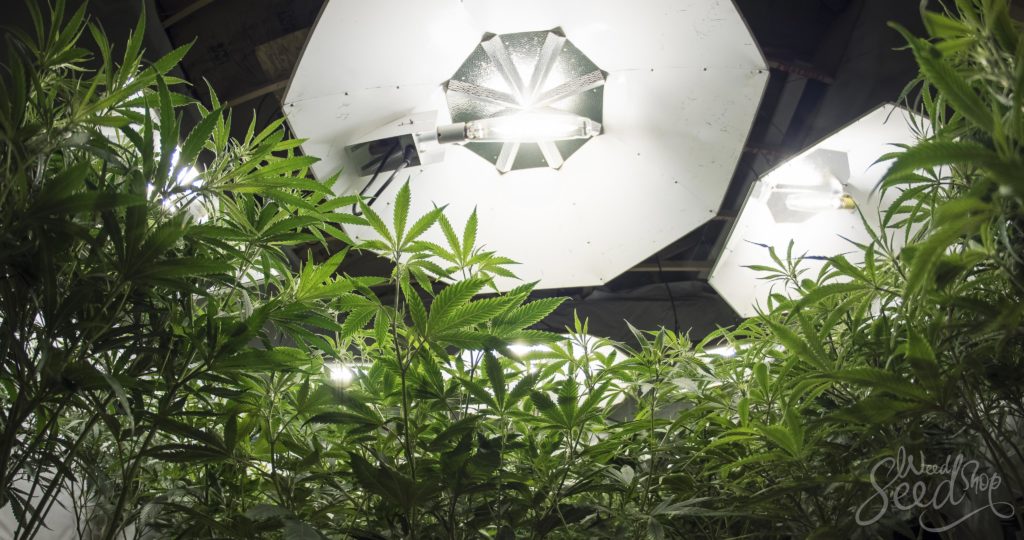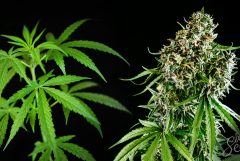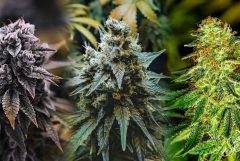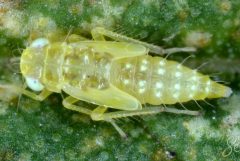There are more and more lighting options available on the market these days for indoor growers. It can be difficult to make choices if you don’t know your options and the benefits or disadvantages of each one. This article is the lowdown – the basic information about the different lighting choices you have for your indoor cannabis garden.
If you have the pleasure of growing outdoors, in the open sunshine, you fortunately do not have to worry about lighting. However, for growers who have opted for indoor growing, lighting is one of the most important tools. Lighting is a grower’s way of mimicking sunlight, which as we know, is imperative to growing healthy plants.
There are a few things to consider when choosing lights:
- Firstly, lighting can be expensive – and not just to purchase the globes. They use a lot of energy, and you can waste a lot of money using globes that might not even produce adequate lights. Energy efficiency is important when it comes to growing indoor weed.
- Another thing to consider is how well plants respond to certain lighting systems. Lighting is the most basic food for cannabis plants, and to get the biggest yield, you need to be feeding them the closest thing to natural sunlight as possible.
This article is the lighting lowdown. We will compare many different lighting options and the reasons you may or may not want to choose certain globes for your indoor growing operation.
Fluorescent grow lights
There are many growers who are using fluorescent grow lights, and within this category there are many different kinds still. One of the reasons that florescent grow lights are popular among gardeners, is because they are cheap to buy and don’t use a lot of electricity. Having said that, they aren’t necessarily the best lighting system to use throughout all the growth stages of cannabis.
Fluorescent lights don’t penetrate very far down into the plant, making them ideal for seedlings or young plants, such as those that have just been germinated. But once plants reach the flowering stage, fluorescent lights might not provide enough food to give good yields. This is especially true if the plants you are growing are quite tall, like Ice, California Orange Bud or Mexican Haze.
T5 Grow lights
T5 grow lights are the most readily available form of fluorescent lights. They look like long tubes and often come as part of a panel. They can be kept quite close to plants and seedlings without the threat of burning them, so in a way they are ideal for your seedlings.
These lights are easy to find in basically any garden store. T5 lights aren’t producing an incredible amount of heat, either. That means managing the temperature in your grow room is quite easy. It also means that you can grow your plants in a small grow room, making it easier to hide in small corners of your house!
CFL Grow lights

These are the twisted looking lights that you’ve probably seen in many homes and indoor growing setups. The light spectrum produced by CFL grow lights is actually perfect for cannabis. The problem is there isn’t really a lot of light coming from them. This means you probably need a lot of them to produce sufficient lighting for your grow room.
They need to be kept close to plants, and are the most suitable for extremely small growing locations, such as inside of cabinets.
CFL grow lights are not ideal for growing huge plants, and are better for plants being trained to stay short and stocky, like Afghan, Big Bud, Amnesia and Northern Lights. The light doesn’t travel very far, as is the case with most fluorescent lighting.
HID (High Intensity Discharge) Grow Lights
HID lighting is probably a preferred lighting method among indoor cannabis growers, but that doesn’t mean they don’t come without their own challenges. At the end of the day, they are far more efficient than fluorescent lighting because they produce much more light.
There are different kinds of HID lights that provide different lighting spectrums, too. This means different kinds of lights are more appropriate for different stages of growth.
One of the setbacks of using HID lighting is the amount of heat they produce. This means growers have to pay attention to the temperature in their grow rooms. A proper ventilation system is imperative if you’re going to be using HID lighting.
For these reasons, this lighting method is more appropriate for bigger growing spaces rather than cabinets and closets.
In general, HID lights are going to give a much better yield than fluorescent lighting. This is because they are producing more light overall, giving your plants more food to create buds. However, they are more powerful than fluorescent lights, meaning that growers also face a cost for running these lights.
Metal Halide Grow Lights

Metal halide lights are a variety of HID lighting. They are generally used by growers for emitting a bluish light, which plants in the vegetative state can’t get enough of. Be careful not to put metal halide lights too close to plants because they will burn them. That also means growers might need to move the lights around as the plants begin to grow and get closer to the lights.
Metal halide can be used all the way through to harvest, but are especially good lights to use during the vegetative state.
High Pressure Sodium (HPS) Lighting
These light bulbs are probably the most popular grow light on the market for cannabis growers. Cannabis plants absolutely love the yellow light that is emitted by these globes, and as a result the plants grown under HPS light bulbs produce the biggest yields.
These yellow lights are great conductors of bud production, and are the most useful in the flowering stage of growth. However, they can be used for the entire growth cycle of a cannabis plant.
HPS globes are also producing a lot of heat, meaning exhaust fans and ventilation are necessary in grow rooms that are using HPS globes. This scares some growers away from using HID lights in general, and that’s why some growers opt for fluorescent lighting.
If you’re looking to get a good yield and aren’t afraid of doing a bit of extra work, HID lighting are the way to go. These globes are more costly than florescent lighting, but in the end it’s impossible to argue with the yields.
LED grow lights
LED lights are becoming more and more popular among cannabis growers as an alternative to HID lighting. In general, LEDs tend not to produce as much heat as HID lighting. LED lights have their own inbuilt cooling mechanism, which means much less work on the part of the grower for maintaining an appropriate temperature inside the grow room.
Another benefit of using LED lighting is their ability to penetrate the whole way down your plant. That means you can set them up at the beginning of your growth cycle and never have to worry about moving them further away or closer to your plants
LED lights are also extremely easy to set up. They don’t really require much work other than plugging them in and hanging them up on top of your plants. They are ideal in both larger growing spaces as well as smaller ones, such as small cabinets.
Having said all of that, some growers still lean towards HID lighting because they are somehow able to produce better yields. While LED lighting is extremely successful, they are still expensive lights to purchase and do not tend to harvest yields as big as HID lights. This is why some growers are still opting for HID.
Which lighting option is the best for your grow room?
In general, if you are a beginner at growing LED lights are probably the most appropriate. The yield is far more efficient than fluorescent lighting and at the same time they are easy to set up. Depending on how many LEDs you have and their wattage, growers might still have to set up a good ventilation system to maintain temperature.
For more basic growing operations, LED lighting is probably the best choice. At a regular wattage they aren’t consuming so much electricity and aren’t requiring a badass ventilation system. For bigger growing operations, it might be more suitable to go with HID lighting. There are even some growers who are experimenting with a combination of both lighting systems, but that is all still very experimental.
Remember that lighting is one of the most important factors in your grow room. If you always go for the cheaper option, you might be losing on the final yield. At the end of the day, the size of your grow room and how much yield you want to get out of your plants will all play a role in your final decision about lighting.










